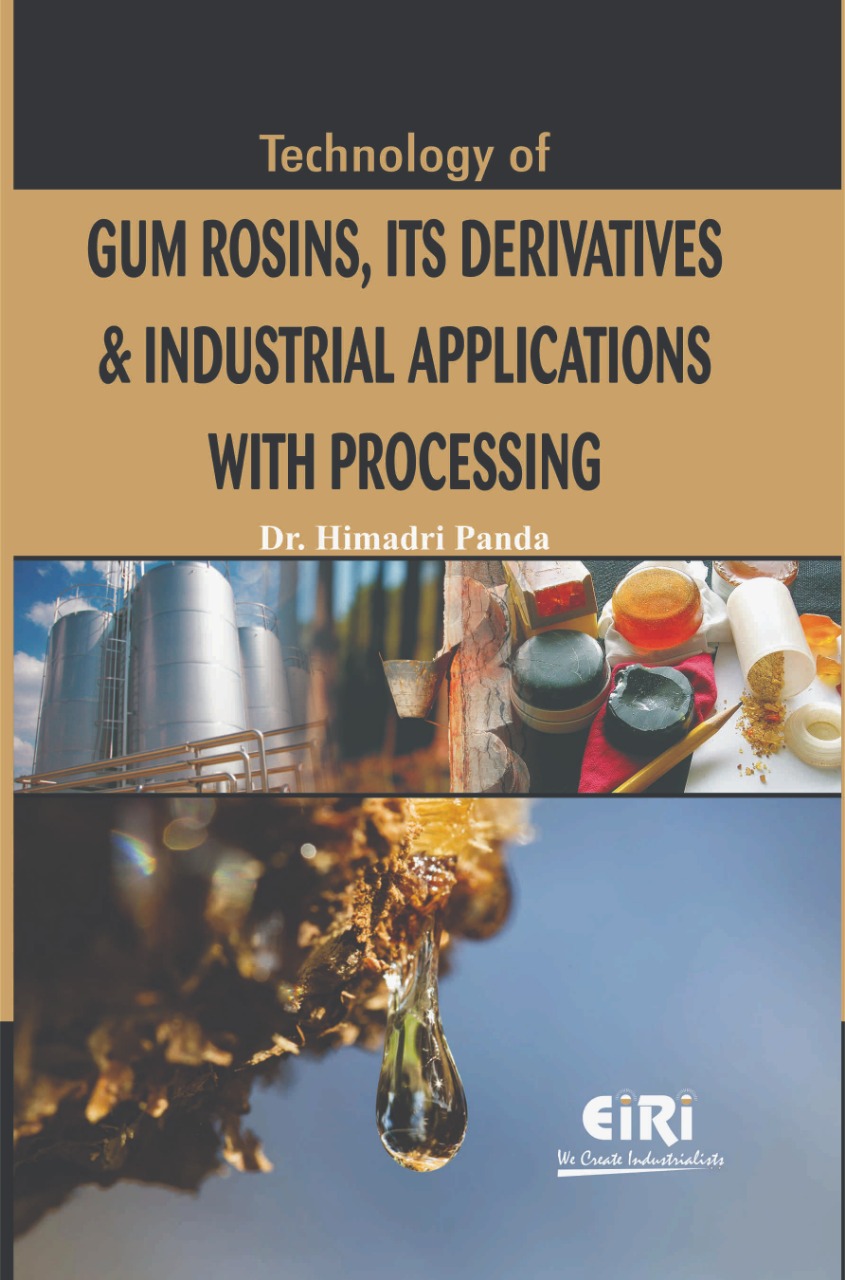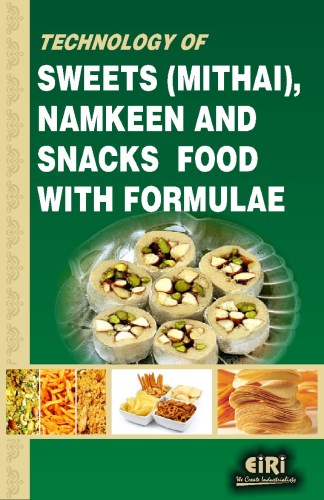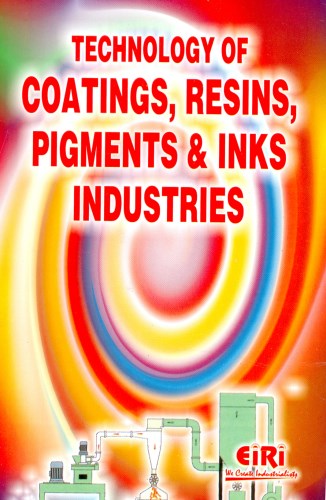Description
Contents
Rosin: Major Sources, Properties and various Applications
- Resin Acids Chemical Reactivity
- Oxidation, hydrogenation and dehydrogenation
- Functionalization of dehydroabietic acid aromatic ring
- Isomerization
- Diels-Alder reactions
- Reactions with formaldehyde and phenol
- Reactions of the carboxylic group
- Miscellaneous reactions
Major Applications of Rosin and Derivatives
- Paper sizing
- Emulsification
- Adhesive tack
- Polymer chemistry and processing
- Printing inks
- Miscellaneous applications
Rosin-Based Surfactants
- Introduction
- Synthesis of Rosin-based Surfactants
- Synthesis of Cationic Surfactants
- Rosin Acid-based Ester Quaternary Ammonium Salts
- Synthesis of Anionic Surfactants
- Synthesis of Zwitterionic Surfactants
- Synthesis of Nonionic Surfactants
- Physicochemical Properties
- Physical Properties
- Phase Behaviour
- Applications
- Paper Sizing and the Rubber Industry
- Antibacterial Activity
- Corrosion Inhibition
Synthesis of Bio-based Corrosion Inhibitors Based On Rosin (Preparation of Non Ionic Surfactants)
- Introduction
- Experimental
- Materials
- Synthesis of rosin / linoleic acid adduct (RLA)
- Measurements
- Electrochemical measurements
- Surface Activity of the prepared surfactants
- Electrochemical impedance spectroscopy (EIS)
- Electrochemical polarization measurements:
Manufacturing of a bio-based epoxy
- Synthesis of maleopimaric acid (MPA)
- Synthesis of triglycidyl ester of maleopimaric acid
- Cured resin preparation
- Results and discussion
Graft copolymer of chitosan with poly[rosin-(-acryloyloxy)ethyl ester]
- Graft copolymerization
- Characterization
- Drug release of Cts and Cts-g-PRAEE
Cationic Surfactants Based on Rosin as Corrosion Inhibitor (Preparing of Maleopimaric acid, rosin diethylaminoethyl ester, rosin catonic surfactants)
- Preparation of maleopimaric acid (MPA)
- Preparation of rosin diethylaminoethyl ester (RMAE):
- Preparation of rosin cationic surfactants (QRMAE):
- Characterization:
- Electrochemical measurement:
Azo-dye Diamines and Rosin Derivative
- Rosin-Maleic Anhydride Adduct (RMA)
- Polymerization
- Fabrication of Polymer Film
- SHG Measurement
- Measurement of Photoinduced Birefringence
Liquid crystal bio-based epoxy coating
- Introduction
- Materials
- Measurements and characterization
Water Soluble Nonionic Rosin Surfactants
- Esterification of rosin
- Esterification of RMA-MPEG
- Characterization of the prepared Surfactants
- Electrochemical measurement
Novel Rosin-Based Biomaterials for Pharmaceutical Coating (Preparation of Coated Pellets)
- Material characterization
- Film preparation and characterization
- Preparation of coated pellets
- Drug release analysis
Renewable Degradable Rosin Acid-caprolactone Block Copolymers
- Experimental Section
- Characterization
- Synthesis
- Degradation of Block Copolymers
Renewable Rosin-fatty Acid Polyesters Novel Rosin Containing Pentablock Copolymers Degradable-vegetable Oil Based Polyesters
- Experimental Section
- Synthesis
- Degradation of Polymers
- ADMET and Thiol-ene Polymerization
- Degradability of Polyesters
Polymethacrylate Containing Photoreactive Abietic Acid Moiety
Synthesis of New Polyurethane Coating Based On Rosin
- Synthesis of Maleopimaric Acid ( MPA)
- Synthesis of Polyurethane by Using TDI
- (Toluene Diisocyanate).
- Measurements
- Testing of The Coatings
Hydrogenated rosin epoxy methacrylate
- Introduction
- Experimental
Synthesized and Chacterisation Polymeric Materials Based On Coconut Oil, Rosin & Maleic Anhydrides
- Introduction
- Experimental Setup for Synthesis of Alkyd Resin
- Neutralization of Polymers
- Methods of Physicochemical Analysis
- Spectroscopic Study of Novel Polymer
Rosin-Derived Polyamide as Epoxy Curing Agent
- Materials
- Synthesis of Maleopimaric acid anhydride
- Synthesis of Rosin-derived polyamide (RBPA)
Antifouling paint binders: Rosin-based systems
- From tin-based to tin-free technologies
- Tin-free paint modelling
- Reaction rate estimation
- Gravimetric approach
- Assessing the risk of diffusion control.
Synthesis and biological evaluation of abietic acid derivatives
- Chemistry
- Biological evaluation
- Conclusions
- Experimental
- Biological assays
- Antitumor activity and cytotoxicity
Polyvinyl alcohol-modified, rosin-based, resin-fortified emulsion polymer
Rosin-Fatty Acid Styrene-Acrylic Polymers
New route to -hydroxydehydroabietic acid derivatives
Copolymer of Styrene and Rosin and Esters
Rosin Modified Unsaturated Polyester
- Unsaturated Polyester
- Curing Agents
- Differential Scanning Calorimeter (DSC)
- Mould Design and Fabrication
- Viscosity Measurement
- Density Measurement
- Cure Characteristics
Modified Rosin
Rosin Monomaleimides
List of Tables
Table Physical properties of rosin based cationic surfactants
Table shows the physical properties of some rosin-based anionic surfactants, and their surface activities were compared with that of widely used anionic surfactant of sodium dodecyl sulfate (K) and alcohol ether sulfate (AES). The dCMC of most anionic surfactants were between and , and their CMC values were between — mol/L. Rosin-based anionic gemini surfactants also showed better CMC and dCMC values than conventional ones.
Table shows the physical properties of some rosin based zwitterionic surfactants. The dCMC of most zwitterionic surfactants were between and , and their CMC values were near – mol/L.
Table Physical properties of rosin based nonionic
surfactants
Table Corrosion inhibition of some rosin-based cationic surfactants
Table : Surface activity parameters of RPEG and RLA-PEG
Table : Inhibition efficiency of RPEG values for steel in M HCl with different concentrations of inhibitor calculated by Polarization and EIS methods
Table : Inhibition efficiency of values of RLA- PEG for steel in M HCl with different concentrations of inhibitor calculated by Polarization and EIS methods
Table Mechanical properties and thermal stability of cured tirglycidyl ester of maleopimaric acid and petroleum-based counterparts DEGBA
Table Synthesis and Molecular Weights of PAI-a
and PAI-b
Table Characterization of Biomaterials
Table Relative Solubility of Biomaterials
Table Formulations of Film Coating Solutions
Table Mechanical Properties of Free Films
Table WVTR Study of Free Films
Table Moisture Absorption Study of Free Films
Table Preparation of Block Copolymers Containing
CL and AEDA by ROP and ATRP
Properties measured for Vegetable oil and Castor
oil based polymers
Table ADMET Polymerization Results
Table Synthesis of PolyMAAsa
Table Composition of Novel polymers
Table Physicochemical Analysis of Novel Rosinated
Alkyd Res-ins based on coconut oil and rosin
Table The IR-spectral data of Novel Polymer AR-
Table The NMR-spectral data of Novel
Polymer AR-
Table Composition of the model paint used to assess the appropriateness of the Xmax concept applied to rosin-based tin-free products (compositions in solids vol. %)
Table
Table Cytotoxicity and anti-HSV- activity of abietane diterpenes on HeLa Cells determined by the end-point titration technique.
List of figures
Figure Diterpene carbon skeletons found in the most common resin acids.
Figure Structures of the most common abietane-type resin acids.
Figure S tructures of the most common pimarane-type resin acids.
Figure O xidation of levopimaric acid with formation of an endoperoxide.
Figure C onversion of abietadienoic acids into dehydroabietic acid and retene.
Figure Nitration of dehydroabietic acid.
Figure M echanism of the acid-catalyzed isomerization of abietadienoic resin acids.
Figure D iels-Alder reaction of levopimaric acid with maleic anhydride.
Figure F ormation of dimeric ketones of maleopimaric-type adducts
Figure A ddition of formaldehyde to abietic acid.
Figure Formation of rosin-modifi ed phenol-formaldehyde resins.
Figure F ormation of a chromane-type derivative of abietic acid through quinomemethide intermediate.
Figure Formation of a chromane-type derivative of abietic acid by reaction with diphenylolpropane.
Figure F ormation of levopimaric adducts with formaldehyde and their conversion into -hydroxymethyl derivatives.
Figure T ypical dimeric structures of abietic-type acids.
Figure S tructures of dehydroabietylamine and dehydroabietanol.
Figure I nteraction of aluminium resinates with cellulose surface.
Figure S ynthesis and polycondensation of a rosin-based poly(amide-imide).
Figure S ynthesis of vinyl-type ester monomers from the maleopimaric adduct
Figure S ynthesis of polyimides by Diels-Alder condensation of resin acid dimers with aromatic bismaleimides .
Figure Synthesis of epoxy resins from resin acid dimer adduct with acrylic acid.
Figure S ynthesis of secondary amines of methyl dehydroabietate.
Figure Phase diagram for the three-component water-surfactant-decanol system.
Figure Gun rosin usage in industry, the data adapted from reference
Figure Antibacterial activity of (C) compared with bromo-geramium and ofloxacin, the data adapted from reference
Figure Electropherogram for the enantiomeric separation of a mixture of three NDA-d/l-amino acids (i.e. NDA-d/l-?-Phen, NDA-d/l-Trp and NDA-d/l-Kyn).
Scheme : Reaction procedure of RPEG and RLA-PEG
Fig. FTIR spectra of a) RPEG and b) RLA-PEG
Fig. HNMR spectra of a) RPEG and b) RLA-PEG
Fig. CNMR spectra of a) RPEG and b) RLA-PEG
Fig. : Relation between surface tension and ageing time for different aqueous concentrations of RPEG and b) RLA-PEG
Fig. Adsorption isotherms of RPEG and RLA-PEG
Fig. (a) Nyquist diagram for steel in M HCl solution containing different inhibitor concentrations (RPEG) showing experimental (square)and fit data (circle), (b) Nyquist diagram for steel in M HCl solution containing different inhibitor concentrations (RLA- PEG) showing experimental (square) and fit data (circle)
Fig. : Equivalent circuit used for fitting
the impedance data
Fig. a: Polarization curves for steel in M HCl solution containing different inhibitor concentrations (RPEG). b: Polarization curves for steel in M HCl solution containing different inhibitor concentrations (RLA- PEG).
Figure Synthetic route for maleopimaric aicd and its triglycidyl ester
Figure (a) & (b) H-NMR and C-NMR spectra for tirglycidyl ester of maleopimaric acid
Figure FT-IR spectra for the mixture of maleopimaric acid and tirglycidyl ester of maleopimaric acid before and after curing reaction
Figure DMA curves for cured tirglycidyl ester of maleopimaric Acid
Fig. Synthetic scheme of Cts-g-PRAEE copolymer.
Figure IR spectra of (upper curve) PAI-a and (lower curve) PAI-b.
Figure : Structures of D-RMID and pPhDA
Figure FTIR Spectra of a) RMA and b) RMA-(MPEG )
Figure A general strategy toward renewable degradable rosin acid-caprolactone block Copolymers
Figure Triglyceride structure where R, R, and R represent fatty acid chains
Figure Common fatty acids obtained from vegetable oil triglycerides
Figure Vegetable oil based monomer synthesis
Figure H NMR of castor oil based monomers
Figure H NMR of ADMET prepared polyesters
Figure H NMR of oxalate polymer prepared by thiol-ene polymerization
Figure DSC thermograms (nd heating cycle) of polyesters: (top left) thiol-ene oxalate polymer (Mn = , g/mol); (top right) ADMET prepared oxalate polymer (Mn = , g/mol); (bottom left) ester polymer (Mn = , g/mol); (bottom right) hydroquinone polymer (Mn = , g/mol)
Figure GPC traces of ADMET prepared oxalate polymer before (green, Mn= , g/mol) and after (blue, Mn= , g/mol) acid degradation
Figure. -Scheme of synthesis of polyurethane rosin
Fig. Synthesis of the hydrogenated rosin epoxy methacrylate (HREM).
Fig. Schematic illustration (cross section view) of the behaviour of a biocide-based antifouling system exposed to sea water. In the TBT-SPCs, the main biocide complementing Cu+ was chemically anchored to the polymer binder matrix while in the tin-free alternatives they are usually embedded in the vehicle.
Fig. Scheme of the TBT-SPC mathematical model. The main processes involved in the activity of a TBT-SPC paint and their interactions are combined with chemical speciation calculations and transport phenomena. The mathematical model can provide reliable estimations of the A/F paint performance.
Fig. SEM picture of a cross section of an exposed antifouling paint based on ZnR and CuO (upper left picture) and its corresponding EDX analysis showing the Cu signals as dots (upper right picture). The intensity of the Zn (not shown) and Cu signal is processed by means of ImagePro, showing a distinct gradient from the unreacted paint to the paint surface (bottom). Under the inert paint, the Zn profile is constant and taken as reference (unreacted Zn-line). The Zn profile in the leached layer (Zn-line) shows a relative residual Zn value at the paint surface of around % of that in the unreacted paint film. The Cu profile (Cu-line) shows approximately the extent of the leached layer. The reason for the larger fluctuations in the Zn signal is a much lower concentration compared to Cu.
Fig. Molecular structures of abietic (), levipomaric (), pimaric () dihydroabietic( ), tetrahydroabietic () and dehydroabietic () acids. Adapted from .
Fig. Dissolution rate under static conditions ofWWrosin in artificial sea water ASTM – related to immersion time (days). Modified from .
Fig. Accumulated -D diffusion-controlled mass loss from a panel immersed in an infinite amount ofwater. Calculated using the transient diffusion equation (Eq. ()) solved for constant concentration at the film surface and infinite water volume.
Fig. Chemical structures of tested abietanes.
Figure : Tensile specimens mold
Figure : Viscosity change with temperature unsaturated polyester containing different concentrations of styrene
Figure : Density change with styrene concentration ratio for unsaturated polyester resin
Figure : Curing time for different volume fraction of unsaturated polyester with % MEKP
Figure : Gel time for unsaturated polyester containing different concentrations of styrene and MEKP ratios
Figure : Time to peak for unsaturated polyester containing different concentrations of styrene and MEKP
Figure : Exotherm temperatures for unsaturated
polyester containing different concentrations of styrene
and MEKP
Fig. Curing reactions of methyl maleopimarate/phenyl glycidyl ether (a), and abietyl glycidyl ether/aniline (b).
Fig. H NMR spectra of (i) abietic acid (ii) abietyl glycidyl ether (iii) methyl maleopimarate
Fig. DSC thermograms of curing of model compounds at different heating rates
Fig. Degree of conversion versus temperature at different heating rates






